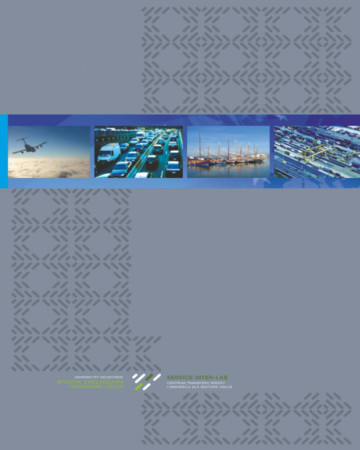
ISSN: 1644-275X
eISSN: 2353-3005
OAI
DOI: 10.18276/ptl.2018.43-07


Issue archive /
nr 3 (43) 2018
WPŁYW ROZWOJU INFRASTRUKTURY TRANSPORTU NA DOSTĘPNOŚĆ TRANSPORTOWĄ OBSZARÓW WIEJSKICH W POLSCE
(Impact of transport infrastructure development on transport accessibility of rural areas in Poland)
| Authors: |
Tomasz
Kwarciński
Wydział Zarządzania i Ekonomiki Usług, Uniwersytet Szczeciński |
| Keywords: | transport infrastructure transport accessibility rural areas |
| Data publikacji całości: | 2018 |
| Page range: | 7 (73-79) |
| Klasyfikacja JEL: | R41 R42 |
Abstract
The article presents an analysis of the accessibility of transport infrastructure in rural areas in Poland.
In assessing changes in accessibility, the evolution of the length of non-urban poviat and municipal
roads with a hard surface in the national and voivodship terms was taken into account.
In Poland, there is an improvement in the accessibility of transport infrastructure in rural areas
in Poland. However, it is possible to observe the scope of these changes, which is spatially and demographically
diverse. It is influenced by the diversity in the increase in the length of non-urban roads in Poland.
The improvement of indicators and, hence, the accessibility of transport infrastructure is noticeable
in the regions of central Poland (Mazowieckie, Kujawsko-Pomorskie province) and eastern Poland.
Download file
Article file
Bibliography
| 1. | Dalvi, M.Q., Martin, K.M. (1976). The measurement of accessibility: some preliminary results. Transportation, 5, 17–42. |
| 2. | El-Geneidy, A.M., Levinson, D.M. (2006). Access to destinations: development of accessibility measures. Minneapolis: |
| 3. | University of Minnesota. |
| 4. | Grzywacz, W. (1982). Infrastruktura transportu. Warszawa: WKiŁ. |
| 5. | GUS (2001, 2006, 2011, 2016). Transport wyniki działalności 2000, 2005, 2010, 2015. Warszawa. |
| 6. | GUS (2017). Powierzchnia i ludność w przekroju terytorialnym 2016. Warszawa. |
| 7. | Hansen, W.G. (1959). How Accessibility Shapes Land-use. Journal of the American Institute of Planners, 25, 73–76. |
| 8. | Harris, C.D. (1954). The Market as a Factor in the localization of industry in the United States. Annals of the Association |
| 9. | of American Geographers, 44, 315–348. |
| 10. | Hay, A. (1993). Equity and welfare in the geography of public transport provision. Journal of Transport Geography, |
| 11. | 1 (2), 95–101. |
| 12. | Hornig, A., Dziadek, S. (1987). Zarys geografii transportu lądowego. Warszawa: PWN. |
| 13. | Komornicki, T., Śleszyński, P., Rosik, P., Pomianowski, W. (2009). Dostępność przestrzenna jako przesłanka kształtowania |
| 14. | polskiej polityki transportowej. Biuletyn KPZK, 241. |
| 15. | Koźlak, A. (2012). Nowoczesny system transportowy jako czynnik rozwoju regionów w Polsce. Gdańsk: Wyd. UG. |
| 16. | Kwarciński, T. (2016). Dostępność publicznego transportu zbiorowego na obszarach wiejskich w Polsce. Szczecin: Wyd. |
| 17. | Naukowe US. |
| 18. | Madeyski, M., Lisowska, E., Marzec, J. (1976). Ekonomia transportu. Wstęp do nauki o transporcie. Warszawa: SGPiS. |
| 19. | Rosik, P. (2012). Dostępność lądowa przestrzeni Polski w wymiarze europejskim. Warszawa: PAN IGiPZ. |
| 20. | Schürmann, C., Spiekermann, K., Wegener, M. (1997). Accessibility indicators: model and report, SASI Deliverable D5. |
| 21. | Dortmund: Institute of Spatial Planning. |
| 22. | Spiekermann, K., Neubauer, J. (2002). European accessibility and peripherality: concepts, models and indicators. Stockholm: |
| 23. | Nordregio. |
| 24. | Tarski, I. (1973). Ekonomika i organizacja transportu międzynarodowego. Warszawa: PWE. |
| 25. | Vickerman, R.W. (1974). Accessibility, attraction, and potential: a review of some concepts and their use in determining |
| 26. | mobility. Environment and Planning, 6, 675–691. |